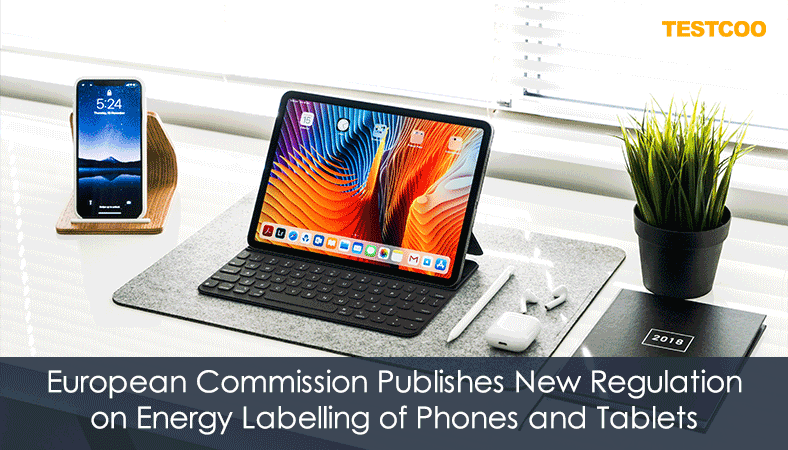European Commission Proposes New Regulation on Energy Labelling of Phones and Tablets

The European Commission publishes new rules to make phones and tablets more durable, energy efficient and easier to repair, enabling sustainable choices by consumers on 16 June 2023.
The European Commission published its proposal on the same day as the European Parliament and Council approved measures to make these devices more energy efficient, durable and easier to repair under the EU Ecodesign Regulation.
The measures are aimed at making the EU's economy more circular, save energy, cut carbon footprints, and support circular business models.
According to the European Commission, smart phones and tablets produced under the new rules will have to display information on their energy efficiency, battery longevity, protection from dust and water, and resistance to accidental drops. This save almost 14 terawatt hours in primary energy each year by 2030.
It will be required to display a reparability score. This will help EU consumers make more informed and sustainable purchasing choices and encourage sustainable consumption.
The new products will use the existing A-G scale EU energy labels, and the EU-wide database European Product Registry for Energy Labels (EPREL) will provide additional information about the product.
The Ecodesign Regulation sets out minimum requirements for mobile and cordless phones and tablets being placed on the EU market, including:
- ● Resistance to accidental drops or scratches, protection from dust and water and use of sufficiently durable batteries. Batteries should withstand at least 800 cycles of charge and discharge while retaining at least 80% of their initial capacity.
- ● Rules on disassembly and repair, including obligations for producers to make critical spare parts available to repairers within 5-10 working days, and until 7 years after the end of sales of the product model on the EU market.
- ● Availability of operating system upgrades for longer periods: for at least 5 years after the product has been placed on the market.
- ● Non-discriminatory access for professional repairers to any software or firmware needed for the replacement.
Next steps
The Energy Labelling rules will be submitted to the European Parliament and Council for a two-month scrutiny period, after which they will be formally adopted if there is no objection to the text by the co-legislators.
To align the entry into force of these two pieces of legislation concerning the same category of products, their publication in the Official Journal will occur on the same day, after the energy labelling rules are adopted. After their entry into force, the proposals both foresee a 21-month transition period before the requirements take effect.
For More Information
Commission Regulation laying down ecodesign requirements for smartphones, mobile phones other than smartphones, cordless phones and slate tablets
Commission Delegated Regulation on the energy labelling of smartphones and slate tablets
Consumer Electronics Inspection on mobil phone and tablets regulations and quality control inspection checklists.
Related Articles
Read MoreFree Sample Report Performance Quality Control
Download a sample report to keep control of your supply chain!
Featured Articles
 AQL Table | How to Read It
AQL Table | How to Read It TOP 10 Common Defects in Garments Quality Inspection
TOP 10 Common Defects in Garments Quality Inspection Product Packaging and Shipment Label requirements for Amazon FBA
Product Packaging and Shipment Label requirements for Amazon FBA What Is ASTM-F2413-18? Protective Footwear Standard
What Is ASTM-F2413-18? Protective Footwear Standard How to Conduct Third-Party Quality Control Inspections for Electric Scooters
How to Conduct Third-Party Quality Control Inspections for Electric Scooters SMETA Audit-What is SMETA Audit?
SMETA Audit-What is SMETA Audit? TESTCOO Supplier Verification/Certification Service SLCP, Higg FEM, GRS, GOTS
TESTCOO Supplier Verification/Certification Service SLCP, Higg FEM, GRS, GOTS Quality Control Inspection Company in China
Quality Control Inspection Company in China What is Quality Inspection? A Complete Guide
What is Quality Inspection? A Complete Guide Guidelines for Product Inspection in India
Guidelines for Product Inspection in India
Category
- Production Inspection Service
- Factory Audit
- Softline Inspection
- Hardline Inspection
- Electrics Inspection
- Certification
- Checklist
- Manufacturers
- Quality Assurance Basics
- Products Recall
- AQL
- Guidence and Standard
- News
- Supplier Management
- Amazon
- Protective Equipment
- e-commerce quality control
- Indian Manufacturing
- Soft Goods Quality Control
- Supply Chain Management
- Supply Chain Resilience
- E-Commerce Quality Control
- ISO 2859
- Supply Chain Optimization
- Garment Industry
- Higg Index



